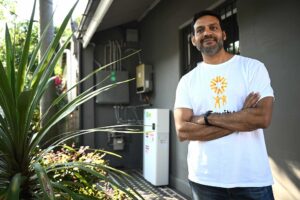Victoria is being challenged to shoot for net-zero emissions more than 16 years ahead of schedule – an easy target according to modelling based on new data showing the government has beaten its 2020 target by nearly 10 per cent.
Victoria’s Greenhouse Gas Emissions Report 2020 on Tuesday revealed that the state cut emissions by 29.8% on 2005 levels by 2020 – almost doubling its target of a 15 to 20 per cent reduction.
State energy minister Lily D’Ambrosio attributed the achievement to the Labor Andrews government’s “nation-leading investment in renewable energy,” and said it put state well on track to cut emissions by 50 per cent by 2030.
“It’s only the Labor government that has a track record of delivering on climate change – slashing emissions while driving down the cost of living for Victorian families,” D’Ambrosio said in a statement on Tuesday.
Victoria’s energy sector is still the state’s largest source of emissions, but a 15.8% increase in renewable energy production between 2019-20 has helped to chip away at that share.
The state’s emissions dropped almost 6 per cent between 2019 and 2020, with the largest drops found in the electricity sector, with a reduction of 2.2 million tonnes of emissions.
Next March, the Victorian government is due to set an interim 2035 emissions reduction target following advice of an independent expert panel announced as required by the Climate Change Act.
Green group Friends of the Earth says this provides the perfect opportunity to scale up ambition on emissions reduction, given the fact the state has – as D’Ambrosio puts it – “smashed” its 2020 targets.
Friends of the Earth modelling based on the latest dataset shows that by maintaining the current rate of emissions reductions (2010-20) on a straight-line trajectory, Victoria is on track to significantly exceed its target of a 45-50 per cent cut (below 2005 levels) by 2030.
Indeed, according to the modelling shows, on a straight-line trajectory from the 2020 numbers, Victoria would achieve a 54 percent emissions reduction by 2025 and 79 percent reduction by 2030.
The legislated target of net-zero emissions by 2050, meanwhile, could be achieved in mid-2034 – more than 16 years ahead of schedule, according to the modelling – putting Victoria’s emissions reduction in line with Paris targets.
“This data comes at an important moment for the independent expert panel as they prepare to recommend options for a 2035 Emissions Reduction Target to the Victorian government,” said FoE climate spokesperson Anna Langford.
“This data can embolden the panel to recommend a 2035 target inline with a 1.5°C carbon budget,” she said.
“When the Andrews government rebuilt the Climate Change Act and re-instituted the need to set 5-yearly Emissions Reduction Targets, it demonstrated leadership and provided certainty to business and investors,” said Friends of the Earth campaigns coordinator Cam Walker.
“Setting ambitious targets provides the opportunity to develop a pipeline of jobs and investment for years to come,” he said.








